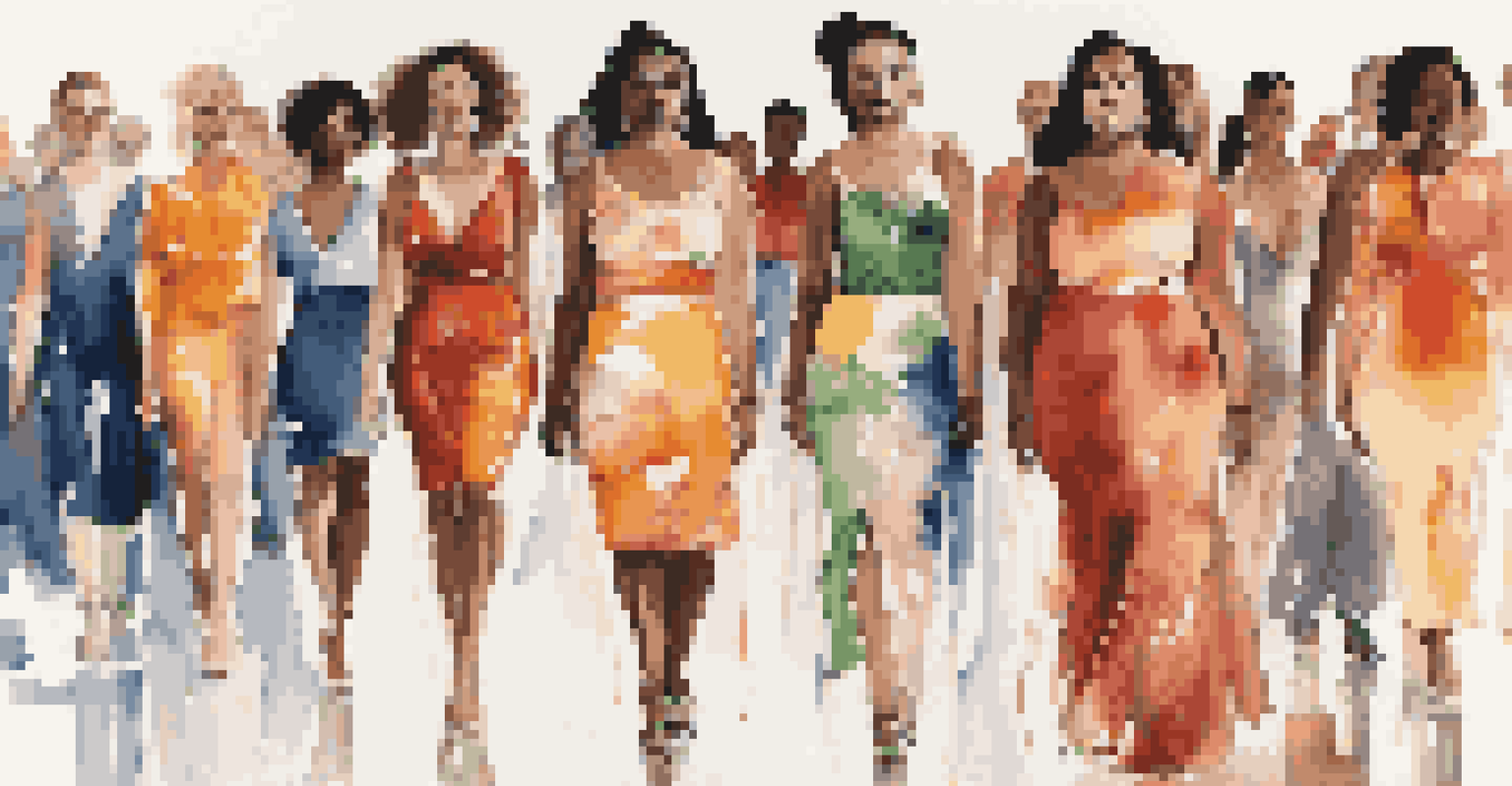Luxury Brands and Accessible Fashion for All

Understanding Luxury Fashion and Its Appeal
Luxury fashion has long been associated with exclusivity and prestige. Think of iconic brands like Chanel or Gucci, which evoke images of elegance and high-status living. This allure often creates a divide between those who can afford such items and those who admire them from afar.
Fashion is the armor to survive the reality of everyday life.
However, the essence of luxury isn't just about price; it’s about quality, craftsmanship, and the emotional connection a brand fosters with its consumers. This connection can be experienced by anyone, regardless of their budget, if luxury brands choose to pivot towards inclusivity.
This shift is not just a trend; it's a response to a growing demand for fashion that celebrates diversity while maintaining the high standards luxury is known for. As consumers become more conscious, brands are realizing that accessibility can coexist with luxury.
The Rise of Accessible Luxury Brands
Over the last few years, we've seen a surge in brands that offer luxury-inspired designs at more affordable prices. Brands like Reiss and & Other Stories have gained popularity for their chic aesthetics without the steep price tags of traditional luxury houses. This democratization of style allows a wider audience to express themselves through fashion.

These accessible luxury brands often utilize quality materials and ethical manufacturing processes, making them appealing to the conscientious consumer. Shoppers can feel good about their purchases, knowing they support brands that prioritize sustainability and ethical practices.
Luxury Fashion Embraces Inclusivity
Luxury brands are evolving to include diverse models and cater to various body types, fostering a deeper connection with a broader audience.
Moreover, these brands are creating a new narrative—one where luxury is not a privilege but an experience that can be shared. By blending high-fashion elements with affordability, they invite all consumers to participate in the luxury conversation.
Luxury Brands Embracing Inclusivity
Many luxury brands are now recognizing the importance of inclusivity in their marketing and product offerings. A notable example is Fenty Beauty, which revolutionized the beauty industry by offering a wide range of shades catering to diverse skin tones. This approach has inspired fashion brands to widen their scope as well.
Luxury is in each detail.
Brands like Balenciaga and Prada have begun showcasing diverse models and creating lines that cater to different body types and genders. This shift not only enhances brand image but also resonates with a broader audience that values representation.
By embracing inclusivity, luxury brands can foster loyalty and connection with consumers who may have felt excluded in the past. This move towards inclusivity reflects a deeper understanding of consumer needs and a commitment to evolving with the times.
The Role of Social Media in Fashion Accessibility
Social media has transformed how consumers engage with fashion brands. Platforms like Instagram and TikTok have provided a stage for influencers and everyday people alike to showcase their personal styles, often blending high-end pieces with accessible fashion. This democratization of style has made luxury fashion feel more attainable.
Influencers who mix high and low fashion create relatable content that resonates with followers, encouraging them to explore their own fashion identities without feeling restricted by price. This trend has prompted luxury brands to rethink their marketing strategies and engage more authentically with their audiences.
Accessible Luxury is on the Rise
Brands are democratizing style by offering luxury-inspired designs at affordable prices, allowing more consumers to express themselves through fashion.
Moreover, social media allows brands to showcase their commitment to inclusivity and accessibility, reaching a wider audience than traditional advertising methods. As consumers share their unique styles, they help bridge the gap between luxury and everyday fashion.
Sustainability: A Shared Value in Fashion
Sustainability is becoming a cornerstone for both luxury and accessible fashion brands. Consumers today prioritize ethical practices and environmental responsibility, pushing brands to adopt more sustainable methods of production. Luxury labels are now investing in eco-friendly materials and transparent supply chains.
Accessible fashion brands are also taking note, incorporating sustainable practices to attract mindful consumers. This commitment to sustainability resonates with a growing demographic that values quality and responsibility over sheer luxury.
By aligning their values with those of their consumers, both luxury and accessible brands can foster deeper connections. This shared commitment to sustainability is paving the way for a more inclusive and responsible fashion industry.
Collaborations: Blending Luxury with Accessibility
Collaborations between luxury and accessible brands are becoming increasingly common, creating exciting synergies that benefit both parties. For instance, the collaboration between H&M and designer Karl Lagerfeld brought high-fashion designs to the masses, proving that luxury can be both aspirational and attainable.
These partnerships allow luxury brands to tap into new markets while offering accessible options for consumers who admire high fashion. At the same time, they elevate the profile of accessible brands, showcasing their potential to create stylish, high-quality pieces.
Sustainability Shapes Fashion's Future
Both luxury and accessible brands are prioritizing sustainable practices, aligning their values with consumers who seek ethical and responsible fashion.
Such collaborations not only broaden the reach of luxury fashion but also help to redefine what luxury means in today's context. They celebrate creativity and inclusivity, inviting everyone to experience the joy of fashion.
The Future of Fashion: A Blend of Luxury and Accessibility
Looking ahead, the fashion industry seems poised for a transformation where luxury and accessibility coexist harmoniously. As consumer values continue to shift towards inclusivity, sustainability, and authenticity, brands will need to adapt to stay relevant.
The future of fashion may very well involve a hybrid model, where luxury brands cater to a wider audience while maintaining their commitment to quality and craftsmanship. This evolution will require a delicate balance of tradition and innovation.

Ultimately, the merging of luxury and accessible fashion can lead to a more vibrant and diverse industry that celebrates individual expression. As we navigate this exciting landscape, one thing is clear: fashion is for everyone.